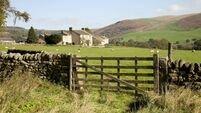Shelter from the storms
Dutch painting reached its climax in the 17th Century, the Golden Age. When tulips were introduced from Turkey in the 1500s, flower cultivation became all the rage. Horticulture has thrived ever since and a day trip to the gardens at Keukenhof is de rigueur for visitors to Amsterdam. But there is an attraction which most visitors miss: the Delta Project, a marvel of civil engineering and a 20th Century achievement to rival the pyramids. The great storm surge barrier on the Eastern Scheldt is about 70km from Rotterdam. It’s a little difficult to get to but worth the effort.
The engineering tradition is much older than those of tulip-growing and painting. The Dutch really know how to control and manage water; when it comes to dyke dam and canal construction, they are unsurpassed. Their skills, honed over the centuries, will be much in demand elsewhere in the world, as the ice-caps melt and sea levels rise.














